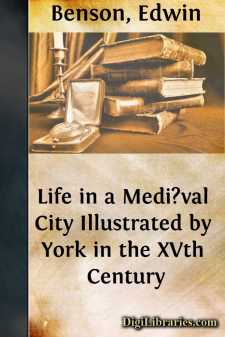Categories
- Antiques & Collectibles 13
- Architecture 36
- Art 48
- Bibles 22
- Biography & Autobiography 813
- Body, Mind & Spirit 142
- Business & Economics 28
- Children's Books 14
- Children's Fiction 11
- Computers 4
- Cooking 94
- Crafts & Hobbies 4
- Drama 346
- Education 46
- Family & Relationships 57
- Fiction 11829
- Games 19
- Gardening 17
- Health & Fitness 34
- History 1377
- House & Home 1
- Humor 147
- Juvenile Fiction 1873
- Juvenile Nonfiction 202
- Language Arts & Disciplines 88
- Law 16
- Literary Collections 686
- Literary Criticism 179
- Mathematics 13
- Medical 41
- Music 40
- Nature 179
- Non-Classifiable 1768
- Performing Arts 7
- Periodicals 1453
- Philosophy 64
- Photography 2
- Poetry 896
- Political Science 203
- Psychology 42
- Reference 154
- Religion 513
- Science 126
- Self-Help 84
- Social Science 81
- Sports & Recreation 34
- Study Aids 3
- Technology & Engineering 59
- Transportation 23
- Travel 463
- True Crime 29
Life in a Medi?val City Illustrated by York in the XVth Century
by: Edwin Benson
Description:
Excerpt
CHAPTER I
INTRODUCTION
In English history the fifteenth century is the last of the centuries that form the Middle Ages, which were preceded by the age of racial settlement and followed by that of the great Renaissance. Although the active beginnings of this new era are to be observed in the fifteenth century, yet this century belongs essentially to the Middle Ages.
Perhaps the most attractive feature of the Middle Ages is that they were so intensely human. A naïve spirit appears in their formal literature, as in Chaucer's account of the Canterbury pilgrims, in their decorated religious manuscripts, in their thought, and very characteristically, in their architecture, which combines a simple naturalness with a bold and daring ingenuity. From columns, the constructional motive of which is so simple and natural, and walls pierced with windows, they erected systems of lofty arches and high stone-vaulted roofs, the stability of which depended on very skilled balancing of thrust and counter-thrust.
To-day mediæval buildings are to be found all over England. The majority of them are examples of an architecture that has not been surpassed for majesty, beauty, size, and constructional skill. Such buildings, without the help of the literary and other memorials, testify by themselves to the greatness of the Middle Ages.
Through the fifteenth century England continued to be in a state of political unrest. There were wars and risings both abroad and at home, for besides the Hundred Years' War (1337-1453) and the Wars of the Roses (1455-1485) there were wars with the Welsh and the Scots, as well as disorders made by powerful, intriguing barons. The barons and great landowners took advantage of the weak royal rule to increase their own power. Parliament, especially the House of Commons, succeeded in the first half of the century in strengthening its constitutional position, but during the Wars of the Roses it became less truly representative of the solid part of the nation, the middle class, and more and more a party machine worked by the baronial factions. The proportion of people wanting peace and firm government steadily increased, and, when the internecine Wars of the Roses, which affected the lords and kings far more than the people, were followed by the protection and order provided without excessive cost by the Tudors, it was the people who most welcomed the change.
The towns were, however, comparatively little disturbed by these perpetual disorders. The mayors and corporations as a rule guided their cities through difficult times with politic shrewdness. Town life developed through flourishing trade and an increasing sense of municipal unity, and municipal importance.
A. Geographical Position
Among the factors affecting this particular city geographical position is evidently the most important. It is to this, combined with the consequent military value of the site, that York owes its origin as a city, its importance in the Middle Ages, and its practical importance to-day....


